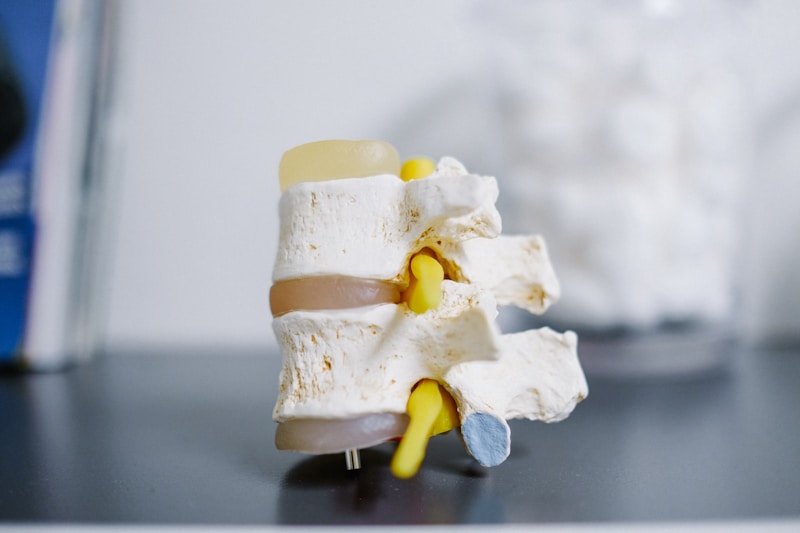Podcast
Questions and Answers
What is the purpose of maintaining targeted SpO2 levels in children?
What is the purpose of maintaining targeted SpO2 levels in children?
Which device is specifically designed to meet or exceed a patient's Peak Inspiratory Flow Rate (PIFR)?
Which device is specifically designed to meet or exceed a patient's Peak Inspiratory Flow Rate (PIFR)?
What does the term 'hypercapnea' refer to?
What does the term 'hypercapnea' refer to?
What measurement is used to assess the adequacy of ventilation?
What measurement is used to assess the adequacy of ventilation?
Signup and view all the answers
Which option best describes the role of humidification in oxygen delivery?
Which option best describes the role of humidification in oxygen delivery?
Signup and view all the answers
What is the main characteristic of a low flow oxygen delivery system?
What is the main characteristic of a low flow oxygen delivery system?
Signup and view all the answers
Which of the following is an adverse effect of inadequate humidification?
Which of the following is an adverse effect of inadequate humidification?
Signup and view all the answers
How is minute ventilation calculated?
How is minute ventilation calculated?
Signup and view all the answers
What condition reflects an imbalance between alveolar ventilation and pulmonary capillary blood flow?
What condition reflects an imbalance between alveolar ventilation and pulmonary capillary blood flow?
Signup and view all the answers
Which factor is crucial to prevent excessive CO2 accumulation during oxygen therapy?
Which factor is crucial to prevent excessive CO2 accumulation during oxygen therapy?
Signup and view all the answers
What is a primary objective of using supplemental oxygen in pediatric care?
What is a primary objective of using supplemental oxygen in pediatric care?
Signup and view all the answers
Which of the following best describes high flow oxygen delivery systems?
Which of the following best describes high flow oxygen delivery systems?
Signup and view all the answers
What is the consequence of using a low flow oxygen delivery system?
What is the consequence of using a low flow oxygen delivery system?
Signup and view all the answers
What is a key role of Heat Moisture Exchange (HME) devices in oxygen therapy?
What is a key role of Heat Moisture Exchange (HME) devices in oxygen therapy?
Signup and view all the answers
What is the significance of monitoring SpO₂ levels in oxygen delivery?
What is the significance of monitoring SpO₂ levels in oxygen delivery?
Signup and view all the answers
In what way does humidity affect gas delivery during oxygen therapy?
In what way does humidity affect gas delivery during oxygen therapy?
Signup and view all the answers
What condition is characterized by low oxygen levels at the tissue level?
What condition is characterized by low oxygen levels at the tissue level?
Signup and view all the answers
What is a common effect of inadequate humidification in oxygen therapy?
What is a common effect of inadequate humidification in oxygen therapy?
Signup and view all the answers
Which measurement is pivotal for assessing ventilation adequacy?
Which measurement is pivotal for assessing ventilation adequacy?
Signup and view all the answers
Why is minute ventilation significant in respiratory care?
Why is minute ventilation significant in respiratory care?
Signup and view all the answers
What is the flow rate range for the Non-Rebreather Mask?
What is the flow rate range for the Non-Rebreather Mask?
Signup and view all the answers
Which device provides the highest potential FiO2?
Which device provides the highest potential FiO2?
Signup and view all the answers
What adjustment should be made if the Non-Rebreather Mask collapses?
What adjustment should be made if the Non-Rebreather Mask collapses?
Signup and view all the answers
What is the primary function of the Venturi Mask?
What is the primary function of the Venturi Mask?
Signup and view all the answers
At what flow rate does the Aerosol Mask operate?
At what flow rate does the Aerosol Mask operate?
Signup and view all the answers
Study Notes
Oxygen Delivery Overview
- Oxygen delivery aims to maintain targeted SpO2 levels in children by providing safe and effective supplemental oxygen.
- The primary objectives include relieving hypoxaemia, ensuring adequate oxygenation to tissues and organs, and minimizing excessive carbon dioxide accumulation.
- Management focuses on selecting appropriate flow rates and delivery devices to reduce work of breathing and ensure effective humidification.
- Proper oxygen delivery practices prevent hypothermia and insensible water loss while maximizing the economical use of oxygen.
Key Definitions
- FiO2: Represents the fraction of inspired oxygen, expressed as a percentage.
- PaCO2: Indicates the partial pressure of carbon dioxide in arterial blood, assessing ventilation adequacy.
- PaO2: Represents the partial pressure of oxygen in arterial blood, used to evaluate oxygenation.
- SaO2: Measures arterial oxygen saturation from blood samples.
- SpO2: Measures arterial oxygen saturation non-invasively via pulse oximetry.
- Heat Moisture Exchange (HME) product: Devices designed to retain heat and moisture, minimizing airway moisture loss.
- High Flow Systems: Deliver sufficient flow to meet or exceed the patient's Peak Inspiratory Flow Rate (PIFR), accurately supplying FiO2.
- Humidification: Refers to adding heat and moisture to a gas; gas's water vapor capacity increases with temperature.
- Hypercapnea: Excessive carbon dioxide levels in the blood.
- Hypoxaemia: Characterized by low arterial oxygen tension in the blood.
- Hypoxia: Refers to low oxygen levels specifically at the tissue level.
- Low Flow Systems: Devices that do not fulfill total ventilatory demands, mixing room air with oxygen, which dilutes FiO2.
- Minute Ventilation: Total gas volume moving into and out of the lungs each minute, calculated by tidal volume times respiratory rate.
- Peak Inspiratory Flow Rate (PIFR): The maximum air flow rate during inhalation, measured in liters per second.
- Tidal Volume: The amount of gas exchanged in each breath, typically 6-10 ml/kg.
- Ventilation - Perfusion (VQ) mismatch: An imbalance between alveolar ventilation and blood flow in the pulmonary capillaries.
Oxygen Delivery Overview
- Aim to maintain targeted SpO₂ levels in children using safe supplemental oxygen.
- Essential for relieving hypoxaemia and ensuring sufficient tissue oxygenation.
- Oxygen therapy must prevent excessive CO₂ accumulation by selecting appropriate flow rates and delivery devices.
- Alleviating work of breathing and ensuring effective clearance of secretions are crucial.
- Optimal humidification is necessary to prevent hypothermia and insensible water loss.
- Efficient use of oxygen resources contributes to safety and cost-effectiveness in treatment.
Key Definitions
- FiO₂: Percentage of oxygen in the air that is inhaled.
- PaCO₂: Partial pressure of CO₂ in arterial blood, indicating ventilation adequacy.
- PaO₂: Partial pressure of oxygen in arterial blood, indicating oxygenation adequacy.
- SaO₂: Arterial oxygen saturation percentage from blood tests.
- SpO₂: Arterial oxygen saturation percentage measured via pulse oximetry.
- Heat Moisture Exchange (HME): Devices that preserve heat and moisture in the airways.
- High Flow Systems: Devices that meet or exceed patient’s Peak Inspiratory Flow Rate (PIFR), ensuring accurate FiO₂ delivery.
- Humidification: Process of adding heat and moisture to gas; effectiveness increases with temperature.
- Hypercapnea: Condition of elevated CO₂ levels in the blood.
- Hypoxaemia: Condition of reduced oxygen tension in arterial blood.
- Hypoxia: Decreased oxygen levels in body tissues.
- Low Flow Systems: Devices that do not meet the full ventilatory needs, mixing room air with oxygen.
- Minute Ventilation: Total gas volume exchanged in lungs per minute, calculated by tidal volume multiplied by respiration rate.
- Peak Inspiratory Flow Rate (PIFR): Maximum airflow rate during inhalation, measured in liters per second.
- Tidal Volume: Amount of air exchanged in each breath, typically 6-10 ml/kg.
- Ventilation-Perfusion (VQ) Mismatch: Imbalance between airflow in alveoli and blood flow in pulmonary capillaries, affecting gas exchange efficiency.
Low-Flow 02 Devices
- Nasal Cannula delivers oxygen at a flow rate of 1-6 L/min and an FiO2 range of 0.24-0.40; crucial to maintain O2 above 5% to prevent hypoxia.
- Simple Face Mask provides oxygen at 5-12 L/min with an FiO2 between 0.35-0.60; commonly used for moderate oxygen therapy.
- OxyMask operates at 1-15 L/min and offers a FiO2 range of 0.24-0.90; designed for patients requiring higher oxygen concentrations compared to the nasal cannula.
- Non-Rebreather Mask supplies oxygen at 10-15 L/min and can achieve an FiO2 of 0.60-0.95; users must ensure the reservoir bag remains inflated for effective oxygen delivery.
- Partial-Rebreather Mask functions at 8-15 L/min with an FiO2 of 0.60-0.80; two clips should be removed to enhance oxygen flow.
High-Flow O2 Devices
- Venturi Mask provides a flow of 4-12 L/min and maintains an FiO2 range of 0.24-0.60, used for precise oxygen delivery and is effective in COPD management.
- Aerosol Mask operates at 8-15 L/min, enabling FiO2 from 0.28 to 1.0; utilized for patients requiring high humidity and precise oxygen therapy.
- High Flow Nasal Cannula ranges from 10-60 L/min with an FiO2 capability of 0.21 to 1.0; supports patients needing high flow rates and precise oxygen concentration.
Studying That Suits You
Use AI to generate personalized quizzes and flashcards to suit your learning preferences.
Description
This quiz focuses on the principles of oxygen delivery and its importance in maintaining adequate SpO2 levels in children. It discusses the safe and effective administration of supplemental oxygen, aiming to alleviate hypoxaemia and ensure proper tissue oxygenation. Key considerations include monitoring and prevention of CO2 accumulation.



